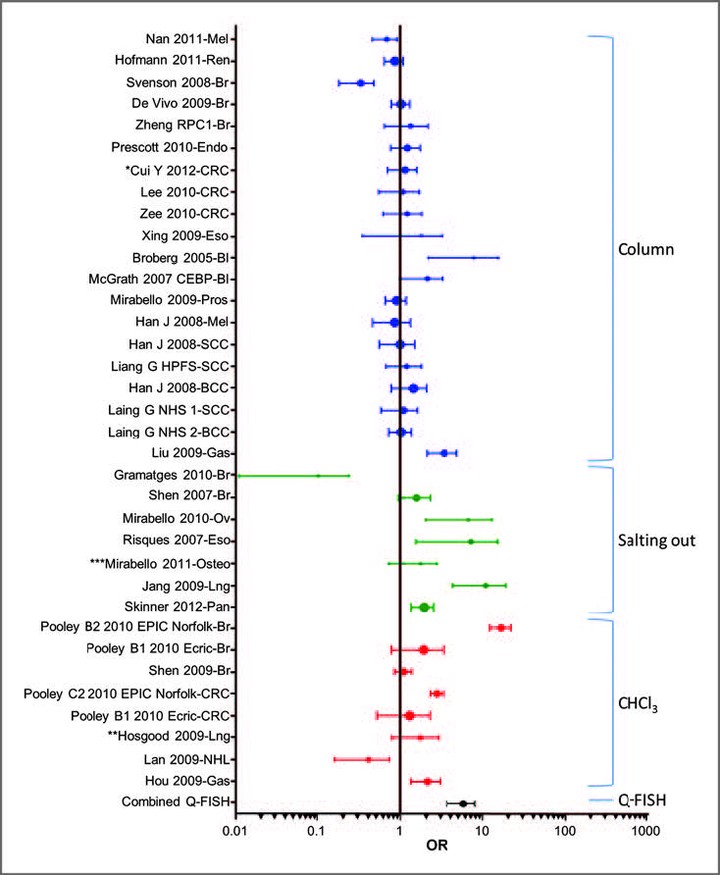
Abstract
BACKGROUND: Both shorter and longer telomeres in peripheral blood leukocyte (PBL) DNA have been associated with cancer risk. However, associations remain inconsistent across studies of the same cancer type. This study compares DNA preparation methods to determine telomere length from patients with colorectal cancer. METHODS: We examined PBL relative telomere length (RTL) measured by quantitative PCR (qPCR) in 1,033 patients with colorectal cancer and 2,952 healthy controls. DNA was extracted with phenol/chloroform, PureGene, or QIAamp. RESULTS: We observed differences in RTL depending on DNA extraction method (P < 0.001). Phenol/chloroform-extracted DNA had a mean RTL (T/S ratio) of 0.78 (range 0.01-6.54) compared with PureGene-extracted DNA (mean RTL of 0.75; range 0.00-12.33). DNA extracted by QIAamp yielded a mean RTL of 0.38 (range 0.02-3.69). We subsequently compared RTL measured by qPCR from an independent set of 20 colorectal cancer cases and 24 normal controls in PBL DNA extracted by each of the three extraction methods. The range of RTL measured by qPCR from QIAamp-extracted DNA (0.17-0.58) was less than from either PureGene or phenol/chloroform (ranges, 0.04-2.67 and 0.32-2.81, respectively). CONCLUSIONS: RTL measured by qPCR from QIAamp-extracted DNA was less than from either PureGene or phenol/chloroform (P < 0.001). IMPACT: Differences in DNA extraction method may contribute to the discrepancies between studies seeking to find an association between the risk of cancer or other diseases and RTL.